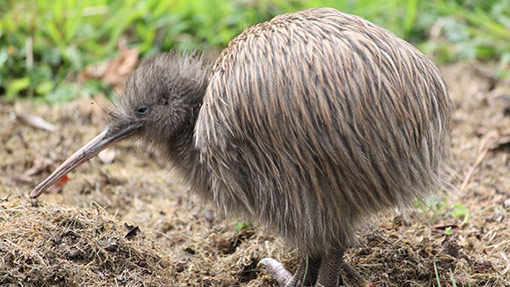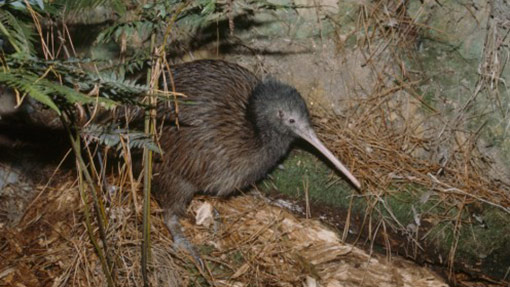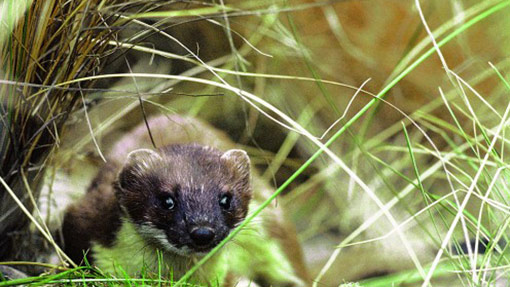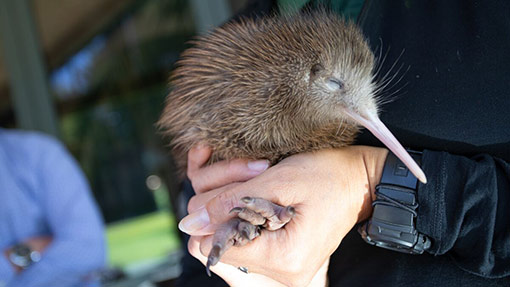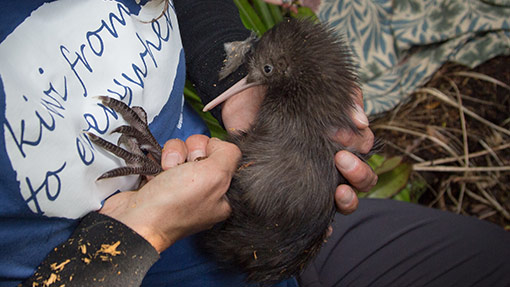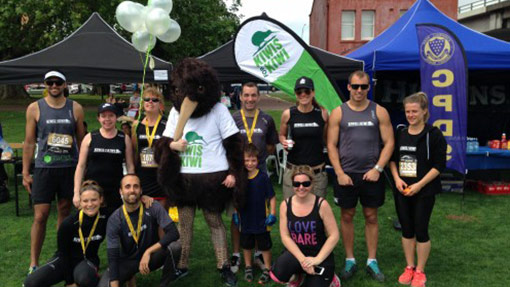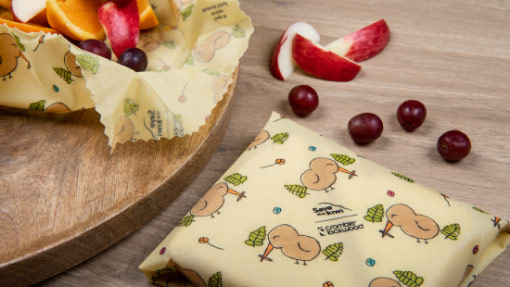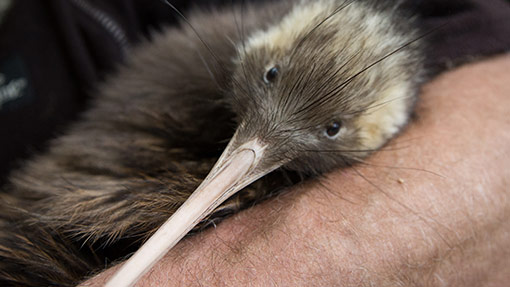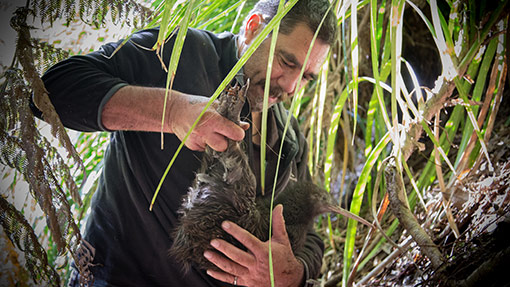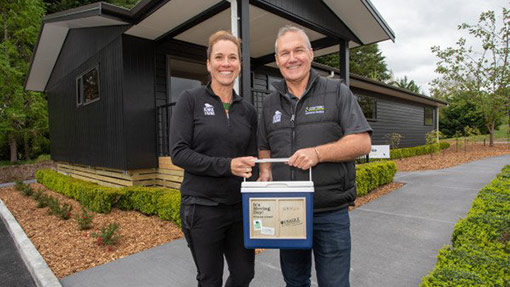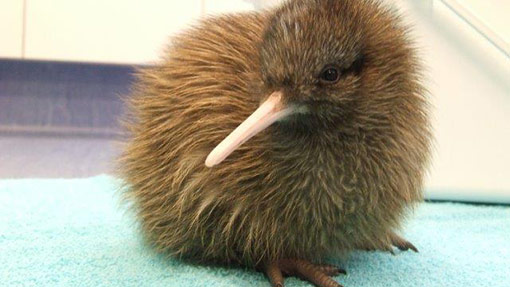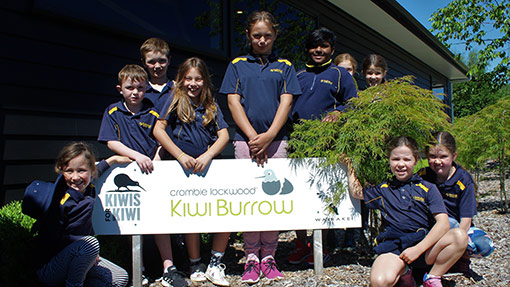In the last four years, the population of the North Island brown kiwi has increased by at least 7,000 birds. That figure takes into consideration the work of just 25 of the hundreds of projects working to save our iconic species.
Today, Save the Kiwi has released the results of an inhouse research project that outlines the estimated growth of the North Island brown kiwi. They analysed the numbers that 25 of the projects they fund reported in 2019 and again in 2023. The results show that combined, these projects have increased the population of North Island brown kiwi by ~7,000 birds.
This is a small percentage of projects that operate in the North Island, but Save the Kiwi is confident these results are indicative of what is happening elsewhere.
The groups included the in research have been partially funded by Save the Kiwi through central government’s Save Our Iconic Kiwi (SOIK) funding package which was established in 2018 to support the population growth of each of the five species of kiwi by 2% annually. For the North Island brown kiwi to achieve this goal (measured against DOC’s base numbers dated 2018), this would require an increase of just 2,600 birds by the end of 2023.
Save the Kiwi CEO Michelle Impey says these results are testament to the mahi Māori- and community-led kiwi conservation groups are doing all over the North Island.
“Where the work is being done, the tide is turning,” she says. “Save the Kiwi is incredibly proud to support local conservation groups that are on the ground, working with locals, to restore the ngahere, and rebuild kiwi populations. It’s a dream come true to see all of this effort being validated by quantifiable growth of kiwi numbers.”
However, Impey says these results could not have been achieved without strong partnerships, collaboration, and the necessary funding.
“The establishment of guaranteed SOIK funding cemented the importance of the kiwi to New Zealand, not just in the public’s psyche but also with a commitment from Government that kiwi conservation is important,” says Impey.
“But there is never enough funding earmarked for conservation and we expect budgets to become even tighter in the coming years. Our plea to Government and the Department of Conservation is to look at these results and commit to keep investing in them. We simply cannot afford to take our foot off the gas when it comes to kiwi conservation. If funding is cut, these results will be reversed in a matter of years – probably less than that.”
Sir John Key was Prime Minister when SOIK funding was established. Sir John is also a patron for Save the Kiwi’s endowment fund and made the following comments after seeing these results.
“The kiwi is New Zealand’s national icon and is recognised the world over,” he says. “Save the Kiwi is in a unique position where they can harness community, iwi and business support by leveraging the iconic kiwi. These results show that Save the Kiwi demonstrates leadership in the conservation space. This is proof that Save the Kiwi’s return on investment is a smart model to support.”
To create kiwi-safe habitat, stoats and ferrets must be suppressed. Many kiwi conservation groups then expand into other predator management strategies that target other pests like possums, feral cats, and roaming dogs.
“Other often critically endangered species like whio and takahē are safer because stoats and ferrets are being removed from the ngahere. Trapping that targets mustelids also captures other predators. As a result, in many parts of New Zealand we’ve seen areas that were previously barren of birdsong become wildlife hubs as the forest has been given the chance to thrive again.”
The news of population growth comes as Save the Kiwi releases an independent impact report that finds the recent change in status of the North Island brown kiwi is largely due to the efforts of Save the Kiwi and the groups and organisations it partners with.
In December 2021, DOC announced that the North Island brown kiwi had been removed from their threatened list. While the species is now classified as ‘not threatened’, it comes with a ‘conservation dependent’ caveat. This means funding for intensive predator control is essential, otherwise the species will end up on the threatened list again.
In the impact report, participants also said Save the Kiwi plays a valuable role in providing support and access to expertise and funding and acting as a conduit through DOC’s sometimes complex processes. Participants said Save the Kiwi has a solid management team and structure that enables them to do more than DOC can do on their own.
Participants also found that all kiwi conservation dollars invested in Save the Kiwi have a multiplier effect and impact more broadly into other conservation, biodiversity and social outcomes.
“We are very proud of the findings of the report,” says Impey. “The Māori- and community-led groups we partner with do phenomenal work. These sorts of results speak for themselves. For a species of kiwi to be removed from the threatened list is an incredible achievement, and one that the entire kiwi conservation community should be very proud of. However, we all know there is still so much work to be done to keep it off it forever.”
It’s not all good news for kiwi, though. While the North Island brown kiwi as a species is estimated to have increased in numbers, the Eastern taxa (subspecies) still flags significantly behind its Western, Northland and Coromandel cousins.
Rowi kiwi are critically endangered, numbering just ~450. Roroa/great spotted, kiwi pukupuku/little spotted, and tokoeka kiwi species are also nationally vulnerable.
“These numbers paint a good story for North Island brown kiwi, but we need to keep building this momentum,” says Impey. “The moment we pause is the moment numbers will very quickly go in the opposite direction.
“If we want to continue this momentum and make all the mahi that’s been done so far worth something, we need more funding. We need Government to recognise our work and our proven track record in this space, and to guarantee funding long into the future. It’s as simple as that.”
